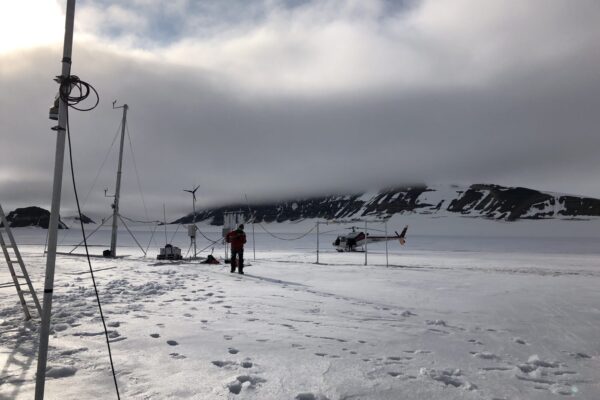Glacier mass balance in 2021/2022 in the Ny-Ålesund area
Monitoring program in Ny-Ålesund
The Norwegian Polar Institute (NPI) is monitoring mass balance of four area glaciers around Ny-Ålesund: Austre Brøggerbreen (since 1967); Midtre Lovénbreen, (since 1968); Kongsvegen (since 1987); and the glacier system Kronebreen/Holtedahlfonna (since 2003) (Figure A).
Net mass balance for 2021/22 (Figure B) was strongly negative for all the glaciers, more negative than the average for the period 2005-2022, but not as negative as the record year 2019/20, despite the record warm summer temperature recorded at Ny-Ålesund.

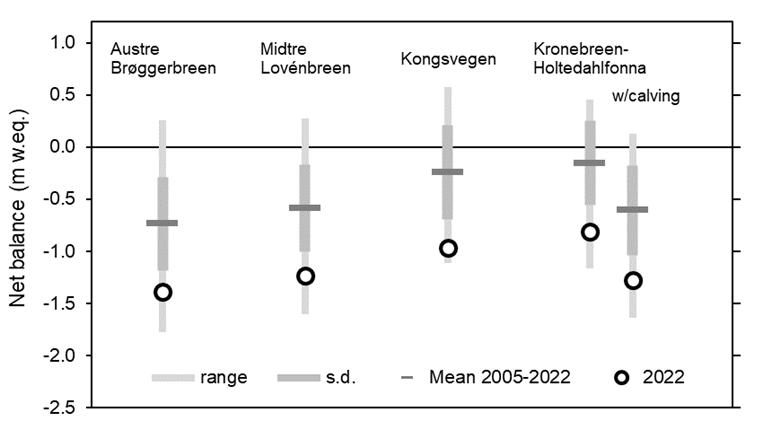
What is glacier mass balance?
Mass balance is the amount of snow and ice lost or gained on a glacier over a given period. It is reported as a single value representing the change averaged over the entire glacier surface.
Field data are obtained during two visits to the glaciers, in spring and in autumn. These data are used to derive the winter balance and the summer balance. These are added to yield the net balance, the annual state of the glacier’s health, as measured between two consecutive autumns. The figure (B) to the left shows net balance for 2022 of the glaciers in the monitoring program, which was strongly negative for all the glaciers.
Results of Mass balance in 2021/2022
The fieldwork was done at the end of August; measurements made some weeks later by work on the nearby glacier Austre Lovénbreen indicate a further loss of about 30-40 cm water equivalent. The expectations is that when remeasures of the mass balance stakes in spring 2023, to account for the further autumn melt, it will show that the net balance for 2022 was as negative as 2020, possibly even more so.
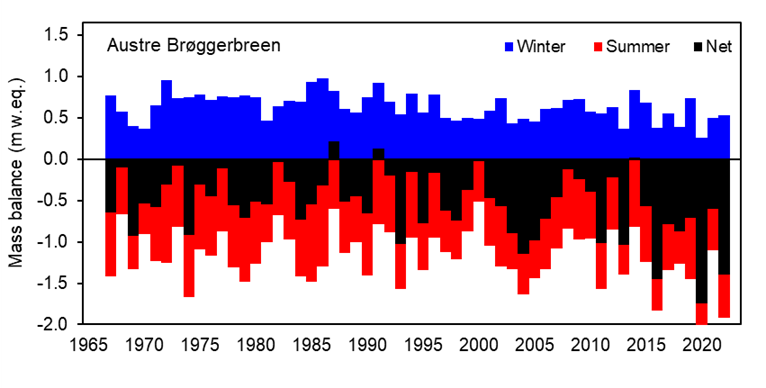
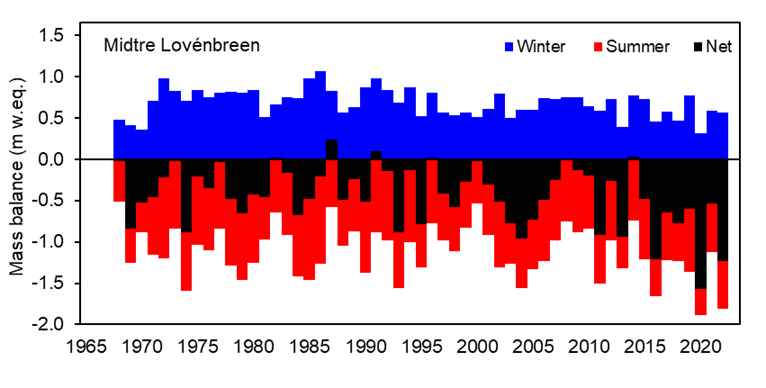
Figure E – mass balance of the glacier Midtre Lovénbreen
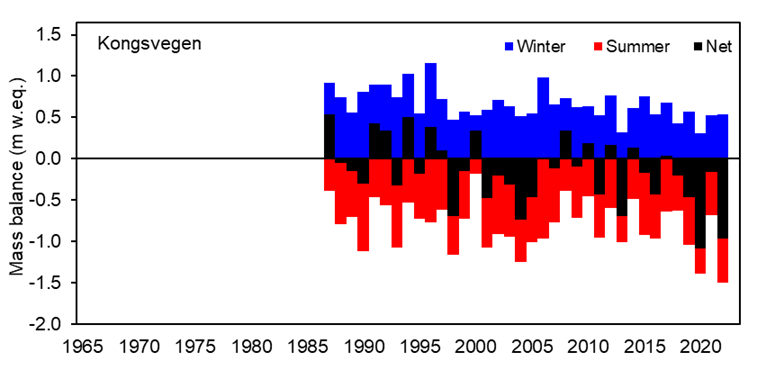
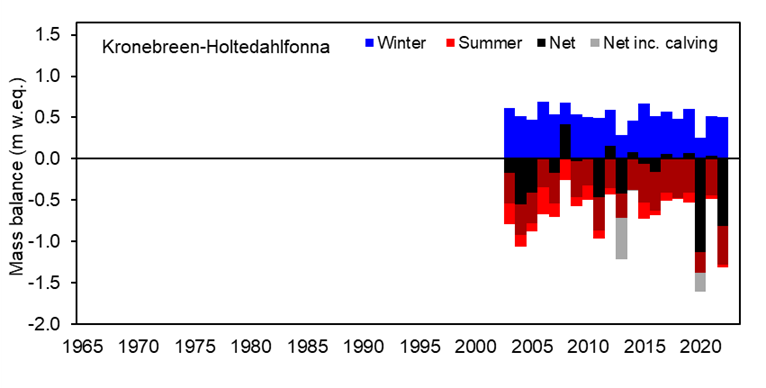
Long term trend
The smaller low-lying glaciers Austre Brøggerbreen and Midtre Lovénbreen almost always have negative net balances, since their accumulation areas are not at a high enough altitude to retain winter snow through the summer melt season. Net balances are more positive on Kongsvegen and Kronebreen-Holtedahlfonna since their accumulation areas are both higher and larger than the smaller glaciers. When calving is included, however, Kronebreen-Holtedahlfonna’s net balance is roughly as negative as the smaller glaciers.
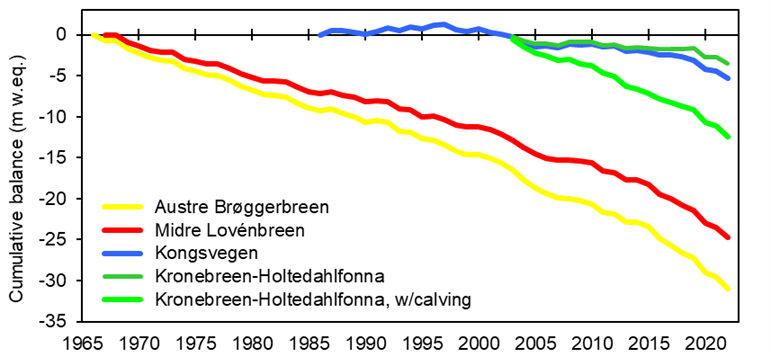
More about glaciology in Ny-Ålesund
News from glaciology research
The Ny-Ålesund Gaciology flagship
Did you find what you were looking for?

